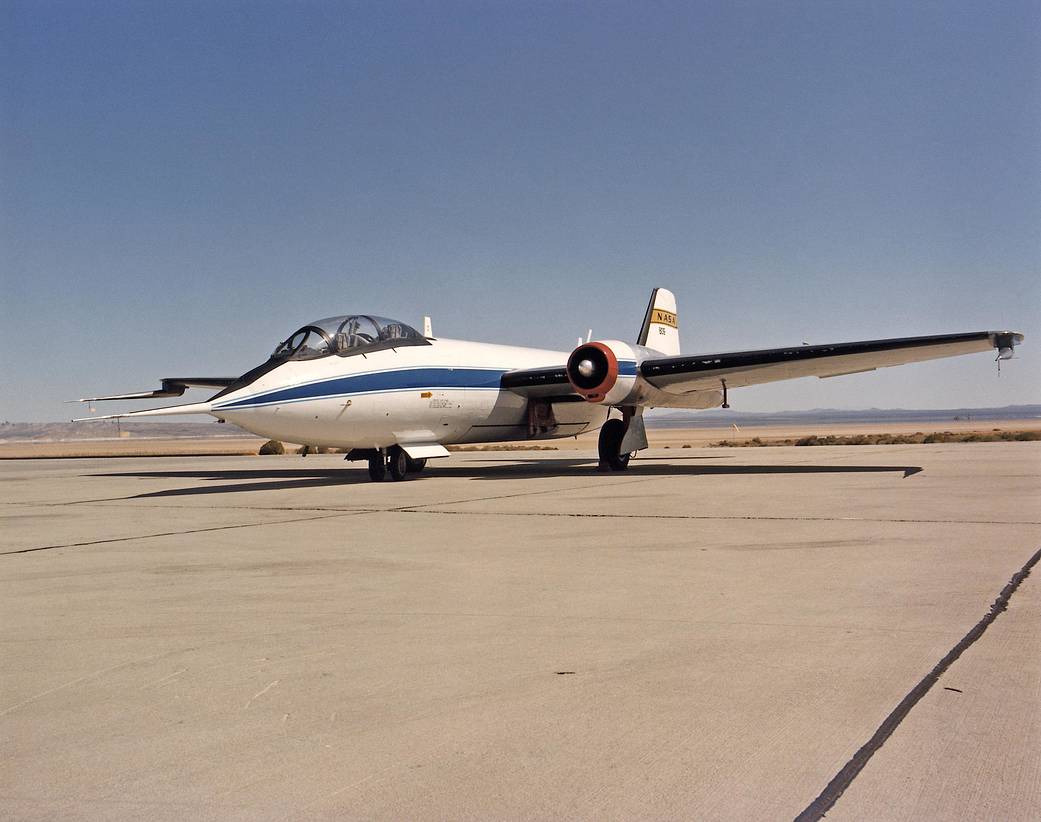In the early 1970s, a Martin B-57B Canberra light bomber was used in several NASA joint flight test programs at the NASA Flight Research Center (now Dryden Flight Research Center) located at Edwards Air Force Base, California.
The early 1970s showed a growing interest in continuing atmospheric research. The B-57B was at the NASA Flight Research Center for a joint program with NASA Langley Research Center, Hampton, Virginia and was having a special set of instrumentation installed. Delays in completing the instruments provided an opportunity to support the NASA space program. The B-57B was used in proof-of-concept testing of the Viking Mars landers. The deceleration drop testing part of the program took place at the Joint Parachute Test Facility, El Centro, California.
With completion of the Viking parachute tests, the B-57B was flown for measuring and analysis of atmospheric turbulence research in 1974-75 as part of a joint NASA program between the Flight Research Center and Langley Research Center. Additional atmospheric testing provided samples of aerosols for the University of Wyoming and clear-air turbulence data for the Department of Transportation.
The aircraft was tested over a span of many years at Edwards Air Force Base by various NASA centers for other types of research. Earlier, in the 1960s, the aircraft was flown at the Flight Research Center by the Lewis Research Center (now the John Glenn Research Center) in support of the newly established NASA Electronics Center in Boston, Massachusetts. Later, in 1982, the B-57B aircraft returned to the (then) Ames-Dryden Flight Research Facility for more Langley-sponsored turbulence testing.
The atmospheric research conducted using the B-57B Canberra provided information on mountain waves, jet streams, convective turbulence, and clear-air turbulence.
2 min read



























